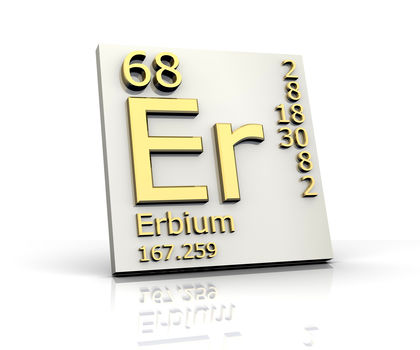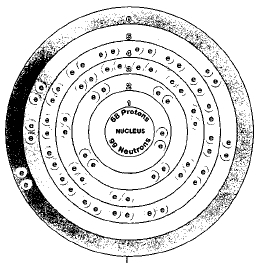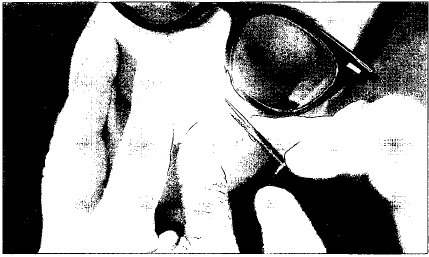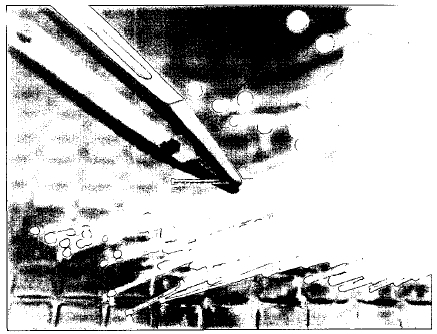ERBIUM


Overview
Erbium is one of 14 rare earth elements with atomic numbers 58 through 71 in Row 6 of the periodic table. The periodic table is a chart that shows how chemical elements are related to each other. Rare earth is a misleading category because these elements are not especially rare in the Earth's crust. Rare earth metals were rarely used because the 15 elements were difficult to separate from each other.
Today, the rare earth elements can be separated easily, and they can be bought at a reasonable cost. Two common uses of erbium today are in lasers and special kinds of optical fibers. Optical fibers are glass-like materials used to carry telephone messages.
The correct chemical name for the rare earth elements is the lanthanides, which comes from the first element in the sixth row of the periodic table, lanthanum.
SYMBOL
Er
ATOMIC NUMBER
68
ATOMIC MASS
167.26
FAMILY
Lanthanide
rare earth metal)
PRONUNCIATION
ER-bee-um
Discovery and naming
The discovery of the lanthanides began outside the small town of Ytterby, Sweden, in 1787. A Swedish army officer named Carl Axel Arrhenius (1757-1824) found an unusual kind of black mineral in a rock quarry. That mineral was later given the name gadolinite.
Gadolinite was full of surprises. As chemists analyzed the new mineral, they found nine new elements! No mineral had ever produced such a wealth of new information.
One of the first scientists to work on gadolinite was Swedish chemist Carl Gustav Mosander (1797-1858). Mosander was able to separate gadolinite into three parts: yttria, terbia, and erbia. Later, the parts he called erbia and terbia had their names switched.
In 1843, Mosander found that erbia was an entirely new substance. It consisted of a new element combined with oxygen. He called the new element erbium. The name came from the town near which it had been found, Ytterby. Interestingly, three other elements were also named after this small town: terbium, yttrium, and ytterbium.
Although Mosander is given credit for discovering erbium, he saw only erbia, the compound of erbium and oxygen. The erbia he saw was not even pure, but was mixed with other rare earth element oxides.
The first pure samples of erbium oxide (erbia) were produced in 1905 by French chemist George Urbain (1872-1938) and American chemist Charles James (1880-1928). It was not until 1934 that the first pure erbium metal was produced.
Physical properties
Erbium metal has a bright, shiny surface, much like metallic silver. It is soft and malleable. Malleable means capable of being hammered into thin sheets. It has a melting point of 1,522°C (2,772°F) and a boiling point of about C (4,500°F). Its density is 9.16 grams per cubic centimeter.
Chemical properties
Erbium is fairly stable in air. It does not react with oxygen as quickly as most other lanthanides. Erbium compounds tend to be pink or red. They are sometimes used to color glass and ceramics.

Occurrence in nature
Erbium ranks about number 42 in abundance in the Earth's crust. It is more common than bromine, uranium, tin, silver and mercury. It occurs in many different rare earth minerals, naturally occurring lanthanide mixtures. Some common sources of erbium are xenotime, fergusonite, gadolinite, and euxenite.
Isotopes
Six naturally occurring isotopes of erbium are known. Isotopes are two or more forms of an element. Isotopes differ from each other according to their mass number. The number written to the right of the element's name is the mass number. The mass number represents the number of protons plus neutrons in the nucleus of an atom of the element. The number of protons determines the element, but the number of neutrons in the atom of any one element can vary. Each variation is an isotope. The isotopes of erbium are erbium-162, erbium-164, erbium-166, erbium-167, erbium-168, and erbium-170.
Four elements are named after the small town of Ytterby, Sweden: erbium, terbium, yttrium, and ytterbium.
At least thirteen radioactive isotopes of erbium are known also. A radioactive isotope is one that breaks apart and gives off some form of radiation. Radioactive isotopes are produced when very small particles, such as protons or neutrons, are

Extraction
Erbium in a mineral is first converted into erbium fluoride (ErF
3
). Pure erbium is then obtained by passing an electric current through
erbium fluoride:
Uses
Erbium metal has few uses. It is sometimes alloyed with vanadium metal. An alloy is made by melting and mixing two or more metals. The mixture has properties different than those of the individual metals. A vanadium-erbium alloy is easier to work with than pure vanadium metal.
The most important uses of erbium are in lasers and optical fibers. A laser is a device for making very intense light of one specific color. The light is intensified and focused into a narrow beam that can cut through metal. Lasers now have many practical applications.
Erbium Lasers are used to treat skin problems. The lasers have been used to remove wrinkles and scars. They work better than other kinds of lasers because they do not penetrate the skin very deeply. They also produce little heat and cause few side effects.
An optical fiber is a thin thread-like piece of glass or plastic through which light travels easily. Light carries messages along the fiber, much as electricity carries messages along copper telephone wires. Erbium optical fibers carry messages in long distance communication systems and in military applications. Telephone providers are converting copper phone lines to optical fibers for improved clarity. Optical fibers carry far more information than the old bundles of copper.
Compounds
There are no commercially important erbium compounds.
Optical fibers and high-definition television
O ptical fibers have proven to be an ideal method of transmitting high-definition television (HDTV) signals. Many people predict HDTV will be the next popular technology item for consumers. The signals in HDTVs contain twice as much "information" as conventional TVs do. These signals result in a much clearer picture. However, the picture on an HDTV looks just like a regular TV unless optical fibers are used. With optical fibers, the HDTV signal can transmit a nearly perfect image.
Erbium optical fibers carry messages in long distance communication systems and in military applications.
Health effects
Almost nothing is known about the health effects of erbium on plants, humans, or animals. In such cases, it is usually safest to assume that the element is toxic.